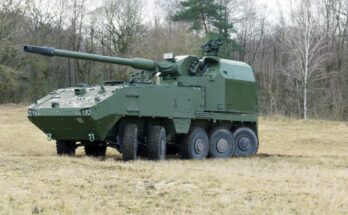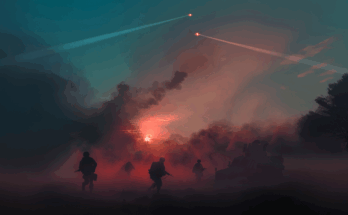
The U.S. State Department has formally approved a Foreign Military Sale to Poland of the Integrated Air and Missile Defense (IAMD) Battle Command System (IBCS) and related equipment for an estimated cost of $4 billion. The sale includes 93 IBCS Engagement Operation Centers (EOCs) and 175 IBCS Integrated Fire Control Network (IFCN) relays.
This latest milestone in the delivery of IBCS to Poland has been in the works for some time now. Components of the system had already been delivered to Poland in May 2023 for its WISŁA medium range air defense program.
In the U.S., IBCS is a critical element of the ongoing Joint All-Domain Command and Control (JADC2) effort to connect sensors from all of the military services into a single network. The JADC2 concept involves linking and improving existing and future sensors, shooters, and platforms across the land, air, sea, space, and cyber domains of multiple services.
IBCS integrates sensors and shooters to deliver fire control data across joint networks, providing a 360-degree view for increased situational awareness with integration capability across coalition partners. According to prime contractor Northrop Grumman, IBCS implements a modular, open and scalable architecture that is foundational to integrating available assets in the battlespace, regardless of source, service or domain, onto a common fire control network.
The system will no doubt play a major part in the follow-on iteration of JADC2. Likely to grow in significance in the coming years, the Combined JADC2 effort, or CJADC2, is nothing less than the effort to incorporate NATO and other global allies into the U.S. joint connectivity effort. Planners believe joint connectivity can’t wholly be complete if international partners, who’ll be needed in a time of crisis, can’t get on the same page. In this light, the latest news of Poland’s IBCS acquisition can be seen as something of a harbinger, or pre-curser, to CJADC2.
Also included in the IBCS FMS are network encryptors; IBCS software development and component integration; U.S. government and contractor technical support; System Integration Lab (SIL) infrastructure; SIL test tools and equipment; U.S. government and contractor technical support for SIL; flight test infrastructure and equipment; flight test targets; flight test range costs and fees; U.S. government and original equipment manufacturer (OEM) flight test services and support; and other elements of logistics and program support.
Andrew Dardine is lead analyst for Forecast International's Defense Electronic Systems group. He is the primary author of Forecast International's Electronic Warfare Forecast and co-author of Electro-Optical Systems Forecast and C4I Forecast. Andrew is also a regular contributor to FI's Defense & Security Monitor blog, offering insights into developing technologies such as directed-energy and next-generation jamming systems. His analysis of such vital market areas as EO/IR systems and electronic countermeasures technology has been cited in Defense News, Aerospace Daily, and Bloomberg Businessweek, among other news media. He has also written about the electronic defense market for Aviation Week and the Journal of Electronic Defense.




